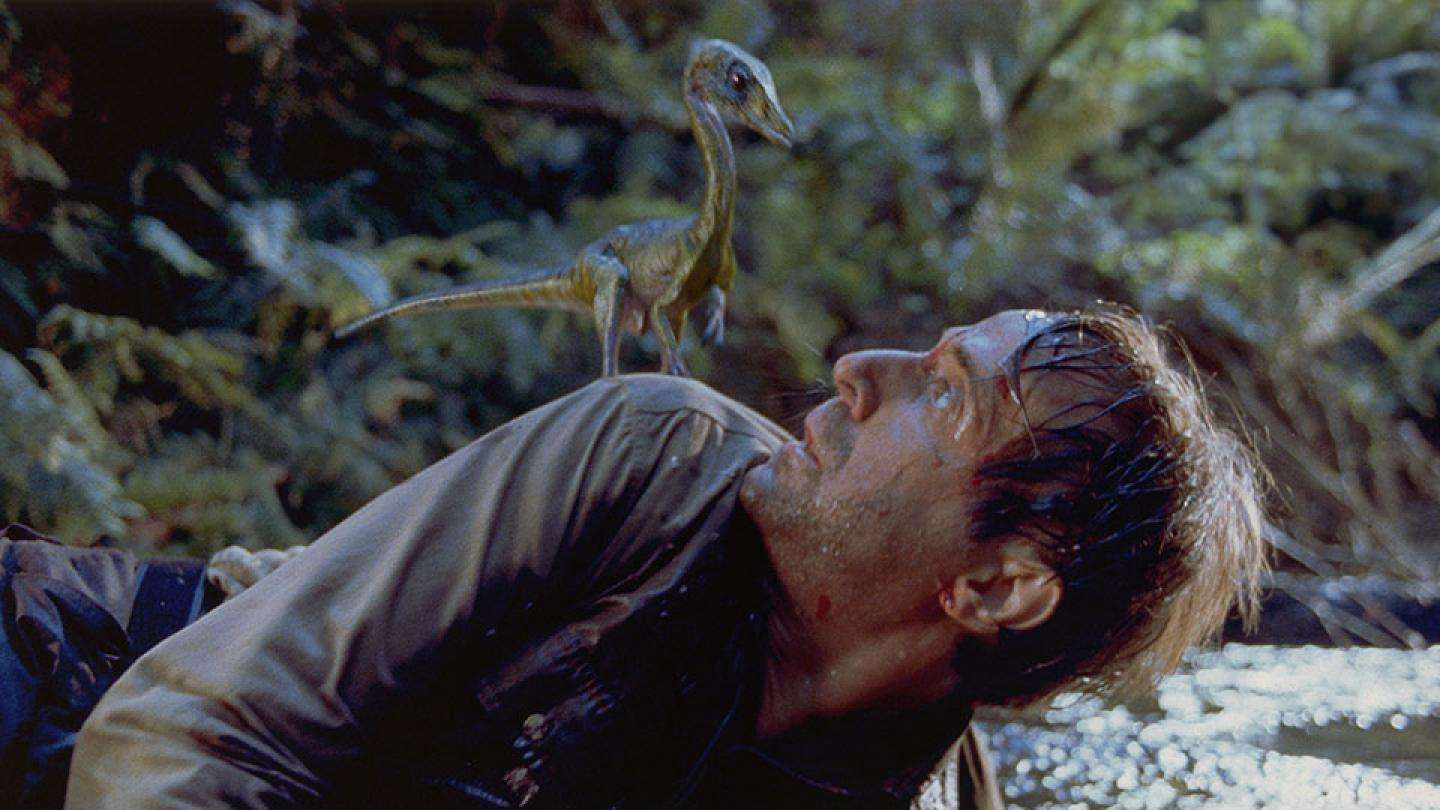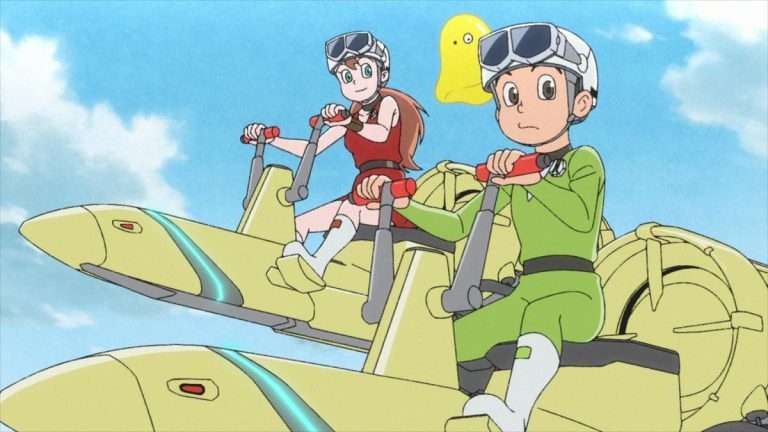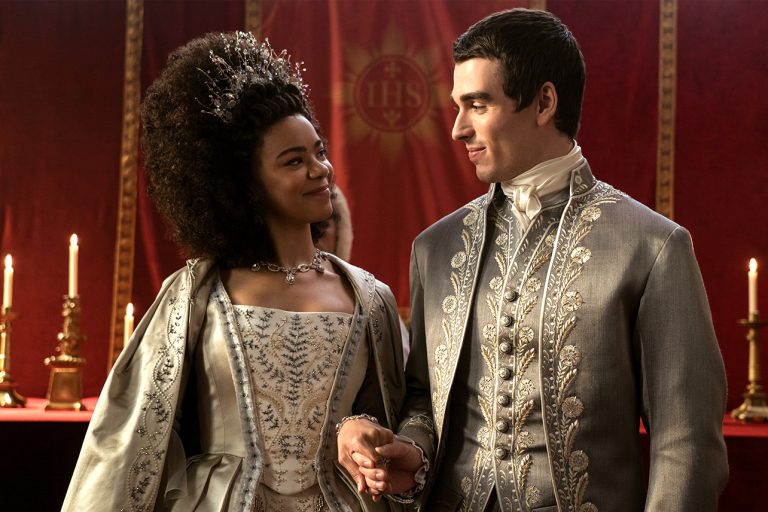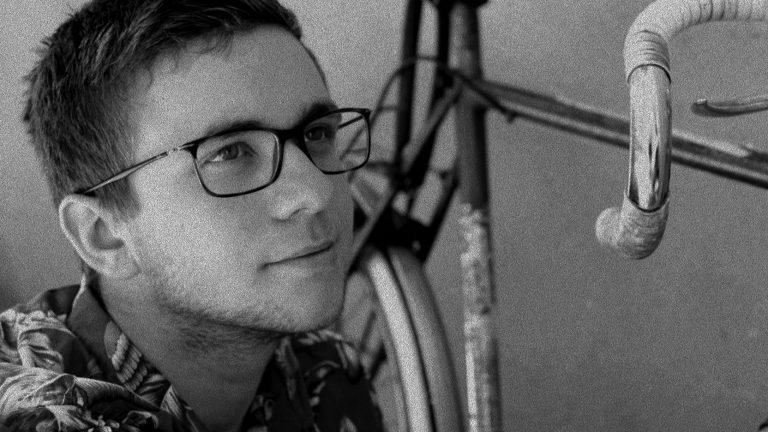Loosely adapted from Crichton’s 1995 sequel and written this time solely by David Koepp, “The Lost World: Jurassic Park” is as much a follow-up as it is a shift. The universe expands, the consequences from the first film start circling back, and the illusion of control wears thinner. There’s new blood, new terrain, but the old itch remains: the need to watch, to study, to own. And at the centre of it all, the creatures—still magnificent, still terrifying.
But this time, it’s different. The wonder isn’t clean or contained anymore. It’s chaotic, dirtier, and doesn’t wait for permission. There’s a tonal shift that Spielberg doesn’t shy away from—the jungle feels lived-in, and the danger isn’t hypothetical. And even though the script sometimes bites off more than it can chew, the themes it carries land well enough to make you feel it wasn’t all noise.
What’s also hard to ignore is how this film helped lay down the blueprint for what a full-blown pop culture franchise looks like. The USD 250 million marketing push had everything—games, comics, action figures—and in the same year, “Titanic” broke the world. Yet this was still the second-highest grosser.
Here is our attempt to revisit the film and its themes for you.
The Lost World: Jurassic Park (1997) Plot Summary and Synopsis:
Who gets attacked in Isla Sorna?
Four years have passed since the catastrophic events at Jurassic Park on Isla Nublar. On the neighboring island of Isla Sorna, a British family anchors their yacht and sets up a beach picnic. Their daughter, Cathy, wanders off into the forest, steak in hand, and encounters a tiny Compsognathus. Mistaking it for a harmless bird, she feeds it—only to be swarmed and attacked by a pack of them. Her screams draw the attention of her parents and the yacht crew.
What’s been going on with Ian Malcolm?
Elsewhere, Dr. Ian Malcolm is en route to meet John Hammond. On the metro, he’s met with snide glances—no one believes his story about dinosaurs on Nublar. At Hammond’s residence, he’s greeted by Lex and Tim and learns that Hammond’s company, InGen, has been taken over by his ambitious nephew, Peter Ludlow. Hammond reveals the existence of a secondary facility—Site B—on Isla Sorna, where the dinosaurs were actually bred. Against all odds, the creatures have survived. Now, Ludlow wants to exploit them to save InGen from collapse, planning to ship them to a Jurassic Park- themed amphitheater in San Diego. Hammond, now an unlikely conservationist, wants Malcolm to join a team documenting the animals to support a non-interference policy. Malcolm mocks Hammond’s moral U-turn—“from capitalist to naturalist in four years.”
Why does Malcolm agree to return?
The team, Hammond explains, already includes paleontologist Sarah Harding—Malcolm’s girlfriend—who’s already on the island. Alarmed, Malcolm agrees to go, treating it as a rescue mission. He’s joined by tech expert Eddie Carr and idealistic photographer Nick Van Owen. Meanwhile, his daughter Kelly is left behind with a babysitter, but she’s not having it.
How do things go wrong once they reach Isla Sorna?
They reach Isla Sorna via a skittish Spanish helmsman who refuses to dock. They find Sarah alive and well. Back at their trailer, Malcolm is shocked to discover that Kelly has stowed away, following her father’s advice not to listen to him. Before long, helicopters arrive—Ludlow’s men, not scientists. Along with them are professional hunters Roland Tembo and Ajay Sidhu. The plan is to capture the dinosaurs and ship them stateside.
What causes the T. rex attack on the trailer?
Malcolm and his team watch as the dinosaurs are wrangled into cages. That night, Nick and Sarah free the captured animals, inciting chaos. The rampaging creatures destroy the InGen camp. Nick also frees a baby T. rex, injured and captured by Roland as bait. Back at the trailer, they attempt to treat it. But its parents arrive. Sarah returns the infant, but the furious adults destroy the trailer, nearly pushing it off a cliff.
Eddie arrives to save them, first using a cable tied to a tree, then trying to pull the trailer with his SUV. But the T. rexes return and devour him. The others are rescued by Ludlow’s remaining team. With communication equipment lost on both sides, they’re forced to move together toward an abandoned InGen compound.
Along the way, a night ambush by the T. rexes scatters the group. In the tall grass, they’re attacked by Velociraptors. Ajay and most of the team are killed. Nick finds the old compound and manages to radio for help. Malcolm, Sarah, and Kelly survive the raptor onslaught and regroup with Nick. Helicopters arrive. Nick reveals he stole Roland’s bullets, stopping him from taking the kill. Still, Roland has tranquilized the adult male T. rex. Ludlow is triumphant, offering him a job at the new park. Roland refuses since he’s seen enough death.

The Lost World: Jurassic Park (1997) Movie Ending, Explained:
How does the T. rex end up loose in San Diego?
In San Diego, Ludlow hosts a press event, unveiling his prize attraction. But the ship crashes into the dock. The crew is dead. The adult T. rex escapes and runs rampant through the city. Malcolm and Sarah retrieve the infant from the park to lure the adult back. They succeed, leading it to the dock. Ludlow, in a final act of delusion, tries to retrieve the infant himself. He’s killed by both child and parent. As the government prepares to strike, Sarah sedates the adult with a tranquilizer. In the aftermath, the dinosaurs are shipped back to Isla Sorna, escorted by the U.S. Navy. On TV, Hammond announces that the island is now a protected nature reserve. “If we just step aside,” he says, “life will find a way.”
The Lost World: Jurassic Park (1997) Themes Analyzed:
Capitalistic Exploitation of Nature and Illusion of Control
The first film already laid bare InGen’s capitalistic drive, but at least it carried a veneer of scientific temperament—a curiosity that still felt academic. “The Lost World” sheds all that. What we get here is capitalism stripped down to pure, unrepentant greed—the kind that’s past redemption. Peter Ludlow is almost a caricature, feeding off his uncle’s legacy and turning living creatures into walking commodities. His intent is clearest when he tells investors, right from the jungles of Isla Sorna, “Why bring people to the zoo when we can bring the zoo to the people?” That’s not just corporate overreach—it’s corporate theatre.
There’s a deeper thread, too—capitalism’s old alliance with colonialism. Both are rooted in domination. Roland Tembo’s big-game hunter obsession echoes the colonial fetish for trophies—men who prowled Indian and African forests not for survival but for proof of power. The film draws that line clearly and then dismantles it. Tembo walks away in the end—not enlightened, but emptied. And Malcolm? He remains the observer, as he was in the first film. Watching, commenting, knowing fully well that humans don’t really learn—just repeat, louder.
Parenthood, Protection, and Legacy
The idea of parenthood pulses quietly through the film. The T. rex family that hijacks the second half starts to mirror Malcolm’s own instincts toward Kelly. It’s not novel—parents caring for their young is as old as time—but it’s sincere. The film uses it to draw an emotional thread between species, not to make the dinosaurs any less monstrous, but to ground their rage in something recognizably human.
Malcolm himself sheds his chaotician quirkiness—not because he’s grown out of it, but because his daughter is right there, demanding his presence over philosophy. The film shows this shift without drawing attention to it, which is part of its strength. There’s also a quiet note in the final scene—when Hammond speaks of life finding its way, only Kelly is awake. Ian and Sarah are asleep. It’s a nod to a larger concern of the time: sustainability and what kind of world we’re leaving behind. The child is listening. The adults are tired.
Read More: Jurassic Park (1993) Movie Ending Explained & Themes Analyzed: What Triggers the Collapse of the Park’s Security Systems?
The Lost World: Jurassic Park (1997) Movie Trailer








